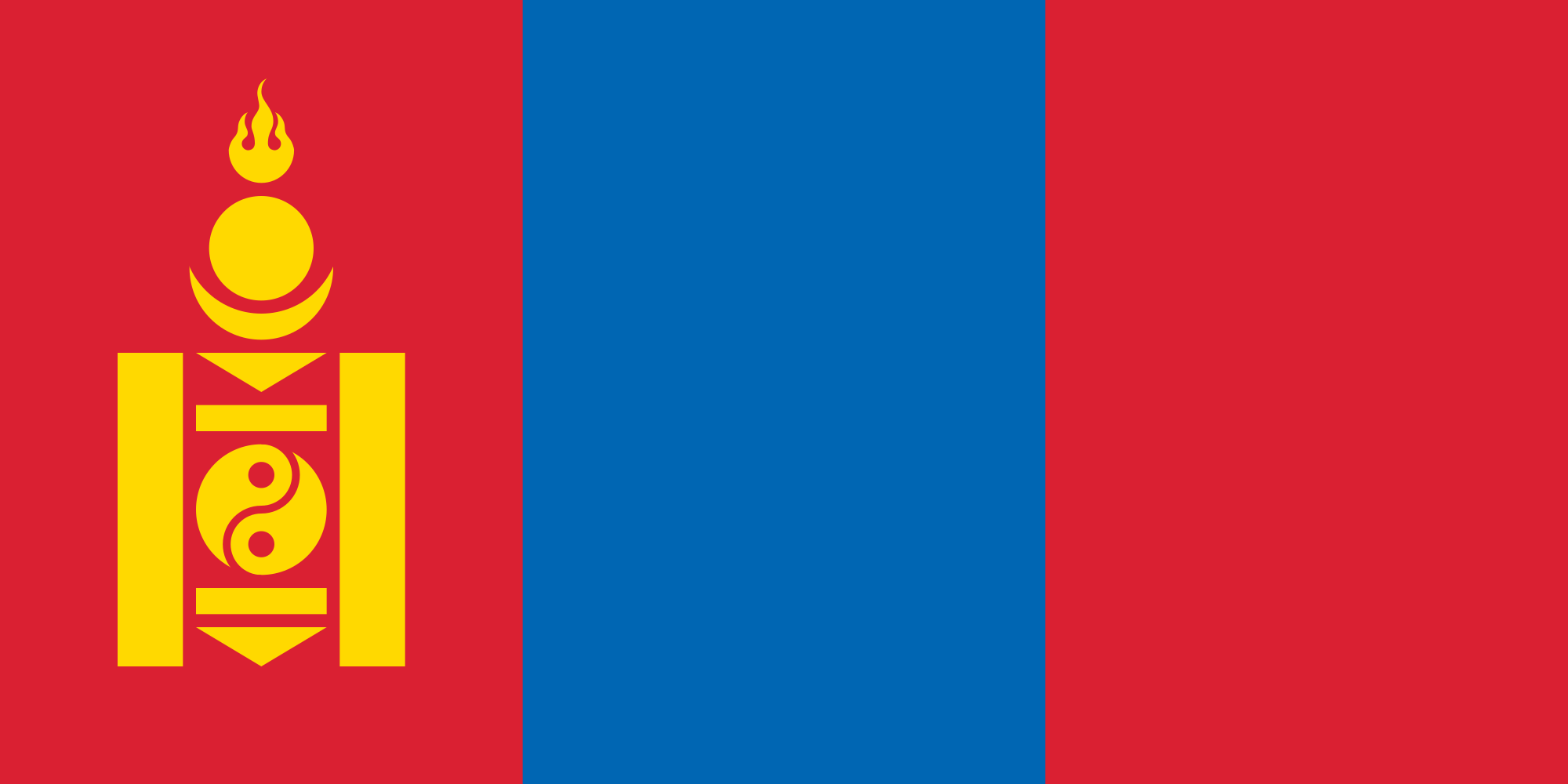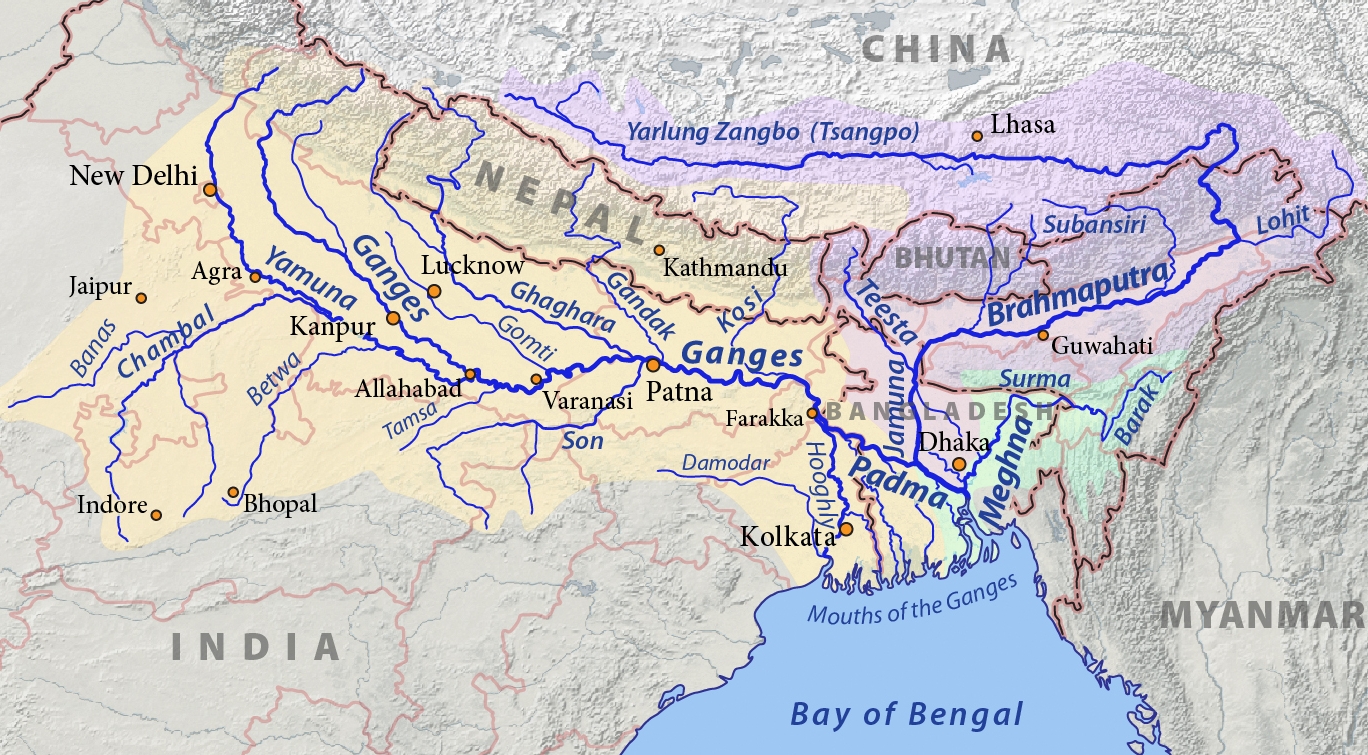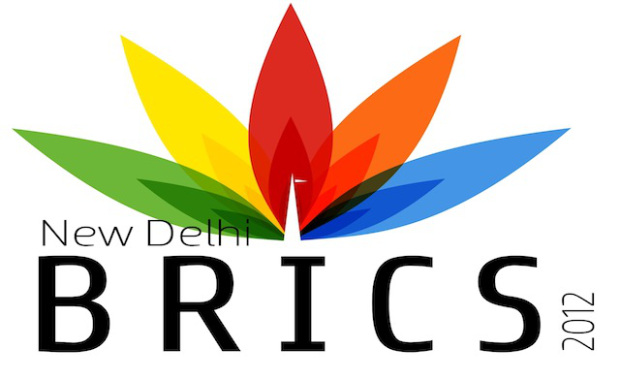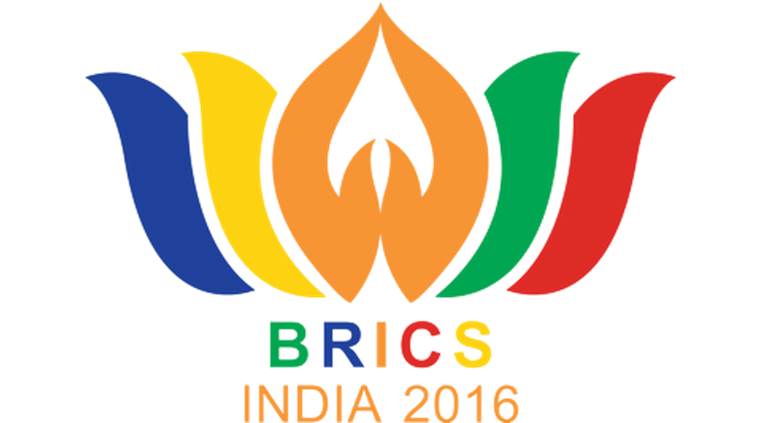
Deutsch-Chinesische Enzyklopädie, 德汉百科
 India
India


印度人民党(印地语:भारतीय जनता पार्टी;英语:Bharatiya Janata Party),简称印人党(BJP),是印度两大主要政党之一,另一个是印度国民大会党[4]。自2014年以来印度人民党是印度的执政党,由纳伦德拉·莫迪出任总理,截至2022年2月它是印度议会和邦立法机构中代表最多的政党[5]。印人党的政治立场属于右翼甚至极右翼,政策反映了传统的印度教民族主义意识形态[6],同时与极右翼组织国民志愿服务团有着密切的意识形态和组织联系[7]。
印度人民党前身是1951年由希亚姆·普拉萨德·慕克吉成立的印度人民同盟,后者于1977年印度紧急状态结束后,与其他党派合并,成立了人民党,并于1977年大选中击败当时的执政党国大党[8]。人民党于1980年解散,此后原印度人民同盟人士又成立了印度人民党。
起初,印度人民党在1984年大选中只赢得了两个席位,此后该党的力量不断增强。1996年,印人党成为印度议会中最大的政党;然而,它在下议院没有取得多数席位,并且其政府只持续了13天。1998年大选后,印度人民党领导的政党联盟,即阿塔尔·比哈里·瓦杰帕伊总理领导的全国民主联盟夺得最多议席,持续了一年时间,直到该届政府垮台。1999年新大选后,瓦杰帕伊领导的全国民主联盟政府继续执政至任期届满,是非国大党政府第一次于完整任期中成为执政党。在2004年的大选中,全国民主联盟惨败,在接下来的十年中为议会最大反对党。
2014年,长期担任古吉拉特邦首席部长的纳伦德拉·莫迪带领印人党在2014年大选中取得压倒性胜利,并成为自1984年以来第一个取得过半数席位的政党,莫迪成为总理,领导全国民主联盟政府。2019年大选中,印人党和全国民主联盟再次提高其得票率和席位,令莫迪成功连任总理[9][10][11]。截至2019年2月,印人党联盟在印度31个邦中的18个邦为执政党。

 Australia
Australia
 Bangladesh
Bangladesh
 Brunei Darussalam
Brunei Darussalam
 China
China
 Hainan Sheng-HI
Hainan Sheng-HI
 India
India
 Indonesia
Indonesia
 Iran
Iran
 Israel
Israel
 Japan
Japan
 Cambodia
Cambodia
 Kasachstan
Kasachstan
 Kyrgyzstan
Kyrgyzstan
 Laos
Laos
 Malaysia
Malaysia
 Malediven
Malediven

 Mongolei
Mongolei
 Myanmar
Myanmar
 Nepal
Nepal
 New Zealand
New Zealand
 Pakistan
Pakistan
 Philippines
Philippines
 Republic of Korea
Republic of Korea
 Singapore
Singapore
 Sri Lanka
Sri Lanka
 Tajikistan
Tajikistan
 Thailand
Thailand
 Turkmenistan
Turkmenistan
 Uzbekistan
Uzbekistan
 Vietnam
Vietnam

ボアオ・アジア・フォーラム(博鰲アジアフォーラム、Boao Forum for Asia、略称BFA、中国語:博鳌亚洲论坛、ピンイン:Bóáo Yàzhōu Lùntán)は、中華人民共和国に本拠を置く国際非営利組織。
スイスのダボスで開催されている世界の政治家・財界人・知識人が集まる国際会議(ダボス会議)を主催する世界経済フォーラムにならい、そのアジア版を目指して、中国政府の全面的支援を受けて構想された。2001年2月27日の設立にはアジアの25カ国とオーストラリアの計26カ国が参加している。
ボアオ・アジア・フォーラム主催の最初の国際会議は2002年4月12日・4月13日に開催され、日本からは小泉純一郎内閣総理大臣が出席して演説を行った[1]。国際会議の会場は、2001年の発足会議以来、中国・海南省の海浜リゾート地・ボアオ(博鰲、海南島東海岸の瓊海市)に固定されている。会議は毎年行われ、各国首脳や大企業経営者、学者、NGO代表など政府・民間のハイレベルの人材が集い、アジアや世界の経済動向、金融政策、経済統合、経済投資、国際協力、社会問題、環境問題などに関する討議が行われる。また多くの経済人や政治家、社会運動家らが直接話し合い、国家間協力や企業提携などのトップ会談が持たれる。 過去の議題には中国の世界貿易機関(WTO)への加入問題、90年代後半のアジア金融危機問題などが取り上げられ、2004年には中国の地政学的な「和平崛起」(平和的台頭)戦略の可否が議題となった。
The Boao Forum for Asia (BFA; Chinese: 博鳌亚洲论坛; pinyin: Bó'áo Yàzhōu Lùntán) is a non-profit organisation that hosts high-level forums for leaders from government, business and academia in Asia and other continents to share their vision on the most pressing issues in this dynamic region and the world at large. BFA is modelled on the World Economic Forum held annually in Davos, Switzerland. Its fixed address is in Bo'ao, Hainan province, China, although the Secretariat is based in Beijing. The forum, sometimes known as the “Asian Davos”, takes its name from the town of Boao, located in China’s southern Hainan province, which has been the permanent venue for its annual conference since 2002.[1]
The Forum is committed to promoting regional economic integration and bringing Asian countries even closer to their development goals. Initiated in 1998 by Fidel V. Ramos, former President of the Philippines, Bob Hawke, former Prime Minister of Australia, and Morihiro Hosokawa, former Prime Minister of Japan, the Boao Forum for Asia was formally inaugurated in February 2001. The founding of the BFA was driven by the People's Republic of China and founded by 26 Asian and Australasian states on 27 February 2001. The organisation held its first meeting from 12–13 April 2002.
Discussions at the BFA focus on economics, integration, cooperation, society and the environment. In the past the forum also addressed China's entry into the World Trade Organization, as well as Southeast Asia's economic crisis during the 1990s. The geopolitical strategy 'China's peaceful rise' was a topic of discussion for the forum in 2004. In addition to its annual meeting, the BFA also sponsors other forums and meetings related to Asian issues.
El Foro de Boao para Asia (en chino: 博鳌亚洲论坛, pinyin: Bó'áo Yàzhōu Lùntán), conocida también por sus siglas en inglés BFA, es una organización no lucrativa que organiza foros de alto nivel para líderes del gobierno, los negocios y la academia en Asia y otros continentes para compartir su visión sobre los asuntos más apremiantes en esta región y en el mundo entero. El Foro Boao es el modelo del Foro Económico Mundial que se celebra anualmente en Davos, Suiza. Tiene su sede en Bo'ao, Hainan, China, aunque la Secretaría se encuentra en Pekín.
El Foro tiene como objetivos promover la integración económica regional y acercar a los países asiáticos hacia sus metas de desarrollo.1 Fue creado en 1998 por Fidel V. Ramos, expresidente de Filipinas, Bob Hawke, ex primer ministro de Autralia y Morihiro Hosokawa, ex primer ministro de Japón.2 El Foro de Boao para Asia fue formalmente inaugurado en febrero de 2001. La creación del foro fue liderado por la República Popular de China y fundada por 26 países de Asia y Australasia el 27 de febrero de 2001. La organización tuvo su primera reunión el 12 y 13 de abril de 2002.
Las discusiones del Foro Boao se centran en economía, cooperación, sociedad y medio ambiente. En e pasado el foro también abordaba el ingreso de China en la Organización Mundial del Comercio, así como la crisis financiera asiática de los años noventa. Además de su reunión anual, el foro también patrocina otros foros y reuniones relacionados con temas asiáticos.
Боаоский Азиатский Форум, БАФ (кит: 博鳌亚洲论坛; пиньинь: Bó'áo Yàzhōu Lùntán, англ: Boao Forum for Asia, аббр: BFA), также известен как «Восточный Давос» — неправительственная и некоммерческая международная организация, имеющая своей целью поддержку и развитие экономического обмена, взаимодействия и сотрудничества как в Азии, так и за её пределами путём проведения ежегодных встреч высокого уровня с участием представителей правительственных, деловых, промышленных и научных кругов и обсуждения актуальных экономических, социальных, экологических и др. проблем.
Учреждён в 2001 году. Ежегодные конференции в Боао проводятся с 2002 года.
Главный офис организации находится в г. Боао, пров. Хайнань, КНР.
В 2018 году Боаоский азиатский форум /БАФ/ пройдет 8-11 апреля. Главными темами мероприятия станут реформы, открытость, инновации и "Пояс и путь"[1].


Bodhgaya (Hindi बोधगया IAST Bodhgayā, wörtlich „Ort der Erleuchtung“, von: bodhi = Erleuchtung) ist eine kleinere Stadt, die etwa 96 km von Patna entfernt im nordindischen Bundesstaat Bihar liegt. Sie liegt im Distrikt Gaya.
In der Antike hieß die Stadt Uruvela (Pali) bzw. Urubilva (Sanskrit). Sie lag im Königreich Magadha, rund 90 km südlich von Pataliputra, wo Siddhartha Gautama um das Jahr 534 v. Chr. unter einer Pappel-Feige (Bodhi-Baum) die Erleuchtung (bodhi) erlangte. In Bodhgaya befindet sich eine der heiligsten Stätten des Buddhismus, der Mahabodhi-Tempel, wo der Mahabodhi wächst, der nach der Überlieferung ein Abkömmling jenes Baumes ist. Im kleinen anliegenden Muchalinda Teich steht eine Skulptur, die Buddha auf einer Lotosblüte sitzend darstellt, überragt von einer Königskobra. Die riesigen Welse im Teich gelten als heilig.
Auffassungen des Mahayana-Buddhismus zufolge sollen im aktuellen Weltzeitalter (Kalpa) 1000 Buddhas erscheinen, die alle in Bodhgaya Erleuchtung erlangen. Der historische Buddha Shakyamuni war der 4. Buddha in dieser Reihe. Bodhgaya wird im Mahayana-Buddhismus auch Vajrasana, der „Diamantene Thron“ genannt.
Bodhgaya ist seit 1953 ein internationales buddhistisches Pilgerzentrum. Buddhisten aus Sri Lanka, Bangladesch, Thailand, Burma, Tibet, Bhutan, Vietnam, Taiwan, Korea und Japan errichteten in Bodhgaya bisher 45 Klöster und Tempel. Eine riesengroße Statue des Buddha in Meditationshaltung und lebensgroße Statuen seiner Schüler (aufrecht stehend) aus grauem Stein befinden sich ebenfalls in Bodhgaya. Die Statue wurde im Jahr 1989 vom Dalai Lama enthüllt. 2002 wurde der Ort in die Liste des Weltkulturerbes der UNESCO aufgenommen.
1964 gründete der muslimische Gelehrte Mawlānā Muhammad Schahīr ad-Dīn in der Nähe des Mahabodhi-Tempels die islamische Schule Madrasat Diyāʾ al-ʿUlūm, die zur Bewegung der Deobandis gehört. Sie war ursprünglich in einer kleinen Moschee untergebracht, wurde aber in den 1980er Jahren auf einem Grundstück, das ursprünglich für touristische Zwecke vorgesehen war, erweitert. 2002 hatte die Schule ungefähr 154 Studenten, zehn Lehrer und sechs weitere Angestellte.[2]
Am 7. Juli 2013 explodierten nach Drohungen islamistischer Gruppen mehrere Bomben mit geringer Sprengkraft auf dem Gelände des Mahabodhi-Tempels.[3]
In der Nähe der Stadt befindet sich der Flughafen von Gaya.
菩提伽耶(梵語:Buddha-gayā;印地語:बोधगया,羅馬化:Bodh-gayā),又稱佛陀伽耶,位于今印度比哈爾邦巴特那(Patna)城南约150公里处,是释迦牟尼的悟道成佛处。已成为佛教徒心中的圣地,也是佛教四大圣地之一。中国古代高僧法显和玄奘先后记载了菩提伽耶的历史。菩提伽耶的摩訶菩提寺2002年被列为世界遗产[1]。
释迦牟尼的诞生地蓝毗尼园、悟道之处菩提伽耶、第一次五比丘讲说佛法的鹿野苑以及涅槃之地的拘尸那羅合称为四大圣地。菩提伽耶是四大圣地中最具重要意义的圣地,位于印度巴特那城南150公里处,由寺和塔组成。相传佛教创始人释迦牟尼在此修行获得觉悟,故该地被佛教徒尊为朝拜圣地。
菩提伽耶金刚宝座塔的主塔高约50米,形如金字塔,底部为边长15米的正方形,向上逐渐收缩,顶部呈圆柱形,上立一铜制螺旋形圆顶。塔底一层四角竖有4个与大塔营式相同的小金字塔。大塔东门两旁辟有佛龛,立贴金佛像数座。其余三面为高2米的石栏杆,共60根,係公元前5-公元2世纪的作品,现藏于各地博物馆,只有复制品放在野外、塔西侧是著名的大菩提树,据说佛陀即在此树下得道成佛,故受到佛教徒敬仰,其枝也曾多次被折,代表佛陀送往世界各地的佛寺供养,繁衍滋生。原树已在1870年被大风刮倒,现在的树据说是原树的「曾孙」。现树下立有红砂石板金刚座,以指示佛陀成道处和表示佛的智慧。围绕大塔还有百塔、牧女善生供奉乳糜和释迦牟尼影窟等遗址,以及各国僧侣在此修建的泰国寺、缅甸寺、斯里兰卡寺、日本寺、中国汉式和藏式等不同风格的寺院,展现了各国建筑艺术的风姿,是世界佛教建筑的苦学之地。




布拉马普特拉河,亚洲主要大河之一,被藏族视为“摇篮”和“母亲河”。以长度来说为中国第5大河(仅次于长江、黄河、黑龙江和珠江)、西藏地区第一大河,以水量来说是印度和孟加拉国的第二大河(仅次于恒河)。上游是世界海拔最高的大河,也是中国坡降最陡的大河。藏语中雅鲁藏布江意为“高山流下的雪水”,梵语中布拉马普特拉河意为“梵天之子”。它发源于西藏喜马拉雅山脉北麓的杰马央宗冰川,从藏南(印度称阿鲁纳恰尔邦)进入印度,在藏南(阿鲁纳恰尔邦)境内称底杭河(Dihang river)或香江(Siang river)。在藏南巴昔卡附近的印度阿萨姆邦境内与其他两河合流后始称布拉马普特拉河。流经孟加拉国后称为贾木纳河,于瓜伦多卡德与恒河汇合,形成巨大的恒河三角洲,最后注入孟加拉湾。全长为2900公里。
布拉马普特拉河(梵語:ब्रह्मपुत्र,印地語:ब्रम्हपुत्र)字面意思是“(印度教三主神之一的)梵天之子”,南亚的一条重要国际河流。
布拉马普特拉河的上游在中国境内,称为雅鲁藏布江,长2057km;流入印度后称为布拉马普特拉河,长644km;流入孟加拉国后称贾木纳河,长240km;在阿里恰与恒河汇流后称帕德玛河,长100km;在琴德普尔与梅格纳河汇合后仍称梅格纳河长241km;最后注入孟加拉湾。以水量、长度来说,此河是南亚第一大河。包括上游雅鲁藏布江在内的全长为2900公里。总流域面积6.22×105km2,流域国有中国、印度、不丹、孟加拉国,四国分别占该河流域面积的51.1%、34%、6.7%、8.2%。
Der Brahmaputra ist der Hauptstrang des als Meghna in den Indischen Ozean mündenden wasserreichsten Stromes in Asien. Er fließt mit einer Länge von rund 3100 Kilometern bis zum Zusammenfluss mit dem Ganges durch das Gebiet der Staaten China, Indien und Bangladesch. Sein Lauf ist teils veränderlich, teils schwer zugänglich und quert mehrere Kulturräume, was zu vielen unterschiedlichen Namen für Teilabschnitte geführt hat.
Der nach Osten gerichtete Oberlauf des Brahmaputra in Tibet heißt auf Tibetisch Matsang bzw. Tachog Tsangpo (in Wylie-Transliteration: rta mchog gtsang po), auf Chinesisch Mǎquán Hé 馬泉河 / 马泉河; danach heißt er auf Tibetisch Yarlung Tsangpo ཡར་ཀླུང་གཙང་པོ (yar klung gtsang po), der Reinigende, nach anderer Quelle „vom höchsten Gipfel herabkommendes Wasser“, und auf Chinesisch Yǎlǔ Zàngbù Jiāng 雅魯藏布江 / 雅鲁藏布江.
Im indischen Bundesstaat Arunachal Pradesh hat der scharf nach Süden abgeknickte Fluss den Namen Dihang oder Siang. Nach einem Richtungswechsel nach Westen an der Einmündung des größten Nebenflusses, des Lohit, heißt er, nun den Bundesstaat Assam durchfließend, Brahmaputra (ब्रह्मपुत्र), was im Sanskrit „Sohn des Brahma“ bedeutet. Ein älterer Name dieses Flussabschnittes war (in Sanskrit-Schriften und in Teilen Assams) Luit oder Lohitya, da früher statt des größeren Dihang der Lohit als der Oberlauf galt. Heute wird der Name auf Hindi ब्रह्मपुत्र, Brahmaputra gesprochen, auf Assamesisch ব্ৰহ্মপুত্ৰ und auf Bengalisch ব্রহ্মপুত্র Brohmoputro.
Bei einer Wendung nach Süden tritt der Fluss in das Staatsgebiet von Bangladesch ein und führt teils ab dort, teils ab der Abzweigung des Alten Brahmaputra (früher der Hauptstrom) den Namen Jamuna. Ab dem Zusammentreffen mit dem deutlich weniger voluminösen Ganges schwenkt der Strom in dessen südöstliche Richtung ein und heißt nun Padma, bis er ab der Mündung des letzten großen Nebenflusses bis zur Mündung in den Golf von Bengalen dessen Namen Meghna annimmt.
ブラマプトラ川(ブラマプトラがわ、英:Brahmaputra River, ヒンディー語:ब्रह्मपुत्र Bramhaputra, ベンガル語:ব্রহ্মপুত্র Brohmoputro)は、チベットに発しバングラデシュでガンジス川と合流し、ベンガル湾へ注ぐ河川である。チベットではヤルンツァンポ川(表記によってはヤル・ツアンポー川とも。チベット語:ཡར་ལུང་གཙང་པོ་ Yar-lung gTsang-po, 中国語:雅鲁藏布江)、バングラデシュではジョムナ川(英:Jamuna River, ベンガル語:যমুনা Jomuna)と呼ばれている。 全長2,900km。源流はヒマラヤ山脈の北側で、マーナサローワル湖から流れでてチベット高原南部を東進した後ヒマラヤ山脈東端をかすめ南下、インドのアッサム州を西へ向け横断、ガンジスに合流する。その合流点では世界最大の広大な三角洲を形成している。中流から下流域にかけて堆積平野が広がり、主に農業が営まれる。雨季にはしばしば氾濫し、氾濫のためにできた沼沢地や池が残る。
The Brahmaputra (/ˌbrɑːməˈpuːtrə/) is one of the major rivers of Asia, a trans-boundary river which flows through China, India and Bangladesh. As such, it is known by various names in the region: Assamese: লুইত luit [luɪt], ব্ৰহ্মপুত্ৰ নৈ Brohmoputro noi, ব্ৰহ্মপুত্ৰ নদ (the tatsama 'নদ' nod, masculine form of the tatsama 'নদী' nodi "river") Brohmoputro [bɹɔɦmɔputɹɔ]; Sanskrit: ब्रह्मपुत्र, IAST: Brahmaputra; Tibetan: ཡར་ཀླུངས་གཙང་པོ་, Wylie: yar klung gtsang po Yarlung Tsangpo; simplified Chinese: 布拉马普特拉河; traditional Chinese: 布拉馬普特拉河; pinyin: Bùlāmǎpǔtèlā Hé. It is also called Tsangpo-Brahmaputra (when referring to the whole river including the stretch within Tibet).[2] The Manas River, which runs through Bhutan, joins it at Jogighopa, in India. It is the ninth largest river in the world by discharge, and the 15th longest.
With its origin in the Manasarovar Lake region, located on the northern side of the Himalayas in Burang County of Tibet as the Yarlung Tsangpo River,[1] it flows across southern Tibet to break through the Himalayas in great gorges (including the Yarlung Tsangpo Grand Canyon) and into Arunachal Pradesh (India).[3] It flows southwest through the Assam Valley as Brahmaputra and south through Bangladesh as the Jamuna (not to be mistaken with Yamuna of India). In the vast Ganges Delta, it merges with the Padma, the popular name of the river Ganges in Bangladesh, and finally the Meghna and from here it is known as Meghna before emptying into the Bay of Bengal.[4]
About 3,848 km (2,391 mi)[1] long, the Brahmaputra is an important river for irrigation and transportation. The average depth of the river is 38 m (124 ft) and maximum depth is 120 m (380 ft). The river is prone to catastrophic flooding in the spring when Himalayas snow melts. The average discharge of the river is about 19,800 m3/s (700,000 cu ft/s),[3] and floods can reach over 100,000 m3/s (3,500,000 cu ft/s).[5] It is a classic example of a braided river and is highly susceptible to channel migration and avulsion.[6] It is also one of the few rivers in the world that exhibit a tidal bore. It is navigable for most of its length.
The river drains the Himalaya east of the Indo-Nepal border, south-central portion of the Tibetan plateau above the Ganga basin, south-eastern portion of Tibet, the Patkai-Bum hills, the northern slopes of the Meghalaya hills, the Assam plains, and the northern portion of Bangladesh. The basin, especially south of Tibet, is characterized by high levels of rainfall. Kangchenjunga (8,586 m) is the only peak above 8,000 m, hence is the highest point within the Brahmaputra basin.
The Brahmaputra's upper course was long unknown, and its identity with the Yarlung Tsangpo was only established by exploration in 1884–86. This river is often called Tsangpo-Brahmaputra river.
The lower reaches are sacred to Hindus. While most rivers on the Indian subcontinent have female names, this river has a rare male name, as it means "son of Brahma" in Sanskrit (putra means "son").[7]
Le Brahmapoutre - du sanskrit ब्रह्मपुत्र (Brahmaputra) signifiant « fils de Brahmâ »3 - est un fleuve de l'Asie du Sud, long de 2 900 kilomètres, ayant sa source principale dans l'Himalaya tibétain, à 5 542 m d'altitude, au glacier Gyima Yangzoin, dans le xian de Zhongba 29° 17′ 41″ N, 83° 46′ 23″ E 4. D'autres sources sont situées au pied des glaciers des monts Kubi-gangri et Ganglung-gangri. C'est le Dyardanes ou l’Œdanes des Grecs anciens. Son parcours tropical fait de la vallée de ce fleuve un des plus riches sites mondiaux au regard de la biodiversité. Ses crues importantes permettent une fertilisation du sol mais sont dévastatrices. Dans son cours inférieur, qui est sacré pour les hindous, le fleuve est utilisé pour le transport de produits agricoles.
Il Brahmaputra (ཡར་ཀླུང་གཙང་པོ་ in tibetano, 布拉马普特拉河 in cinese) è un fiume che nasce nel Tibet sud-occidentale, dove prende il nome Yarlung Tsangpo, e scorre verso est, lungo il versante settentrionale dell'Himalaya, in territorio cinese. Dopo avere aggirato la catena himalayana, piega bruscamente a sud, e col nome di Brahmaputra attraversa gli stati indiani dell'Arunachal Pradesh e dell'Assam, entrando poi nel Bangladesh, dove confluisce nel Gange in corrispondenza del delta di questo per sfociare nel golfo del Bengala.
È lungo 2.900 km, ha una profondità media di 38 metri e massima di 120, si dirama spesso in un intreccio di bracci soggetti a fenomeni di avulsione ed è uno dei pochi fiumi al mondo in cui si verifica la cosiddetta marea fluviale. Il suo bacino idrografico copre una superficie di 670.000 km².[1]
Ha un regime idrico caratterizzato da portata sempre elevatissime: le minime non scendono mai sotto i 5.000 m³/s, ma le massime possono raggiungere anche i 168.500 m³/s, si tratta di portate massime che trovano paragone solo nel Rio delle Amazzoni ed in pochissimi altri fiumi del pianeta. Durante l'estate, quando lo scioglimento dei ghiacciai coincide con l'arrivo del monsone, il fiume è soggetto a catastrofiche esondazioni, che insieme a quelle del Gange allagano intere regioni e sommergono buona parte del Bangladesh, causando ingenti perdite di vite umane e gravissimi danni alle abitazioni e all'agricoltura.[2]
È navigabile per buona parte del suo corso, ma nell'ultima parte del tratto tibetano è caratterizzato da un corso assai impetuoso, con rapide e cascate (una, alta circa 35 metri, è stata scoperta dopo il 2000 nel corso di un'esplorazione britannica). A causa delle gole inaccessibili che attraversa in questa zona disabitata, per lungo tempo non si seppe che il Brahmaputra e lo Yarlung fossero lo stesso fiume, la continuità tra i due corsi è stata scoperta da un'esplorazione compiuta tra il 1884 ed il 1886.
El río Brahmaputra (en idioma sánscrito, ब्रह्मपुत्र, que significa «el hijo de Brahmā») es uno de los ríos más largos de Asia.
Nace en el glaciar Kubigangri, cerca del monte Kailāsh, en el Himalaya, y discurre en dirección este por territorio chino, por la parte oeste del Tíbet, pasando cerca de Lhasa. Después de un recorrido de 2896 km desagua en el golfo de Bengala, en Bangladés, formando parte del delta del Ganges, el mayor delta del mundo. El río es conocido como Tsangpo en el Tíbet y en la zona central de Bangladés se divide en dos ramales, siendo el principal el río Jamuna, nombre con el que es conocido en esa región, y el otro, de menor caudal, el río Shitalakshya.
Es el Dyardanes o "Œdanes" de los antiguos griegos. Su recorrido por la zona tropical hace de su valle uno de los más ricos en diversidad biológica del mundo. Sus principales inundaciones permiten la fertilización del suelo, aunque son devastadoras. En su parte más baja, el río se considera sagrado para los hindúes, y se utiliza para el transporte de productos agrícolas.
Брахмапу́тра[2] (кит. 雅鲁藏布江, тиб. ཡར་ཀླུང་གཙང་པོ།, хинди ब्रह्मपुत्र, ассам. ব্ৰহ্মপুত্ৰ, англ. Brahmaputra, бенг. ব্রহ্মপুত্র) — река в Китае, Индии и Бангладеш, левый приток Ганга; одна из крупнейших водных артерий в Южной Азии.
 Dilma Rousseff
Dilma Rousseff
 Dmitri Anatoljewitsch Medwedew
Dmitri Anatoljewitsch Medwedew
 Hu Jintao
Hu Jintao
 India
India
 Jacob Zuma
Jacob Zuma
 Manmohan Singh
Manmohan Singh
 National Capital Territory
National Capital Territory


 Science and technology
Science and technology
 Party and government
Party and government

 Companies
Companies

 IT-Times
IT-Times
 Sport
Sport
 Religion
Religion
 World Heritage
World Heritage
 Financial
Financial
 Architecture
Architecture
 Geography
Geography